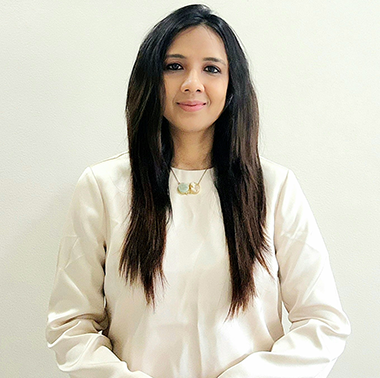A harmonious blend of innovation and patient safety is paramount in today’s ever-evolving medical device regulatory landscape. Furthermore, sustainability of massive regulatory data, updates to the evolving regulations, adherence to country-specific requirements, and adoption of an intelligent yet cost-effective approach to reducing overhead in managing these factors, are key concerns for every OEM.
In this article, we venture beyond the EU MDR to explore the intricate challenges, emerging trends, and transformative technologies that are shaping the future of regulatory compliance.
An Evolving Regulatory Landscape
The race toward regulatory compliance continues to be a significant task for medical device manufacturers worldwide. This dynamic regulatory landscape, however, is not just limited to compliance with the EU MDR. Organizations such as the FDA are implementing their own regulatory frameworks (the Medical Device Regulation Act or MDR). Similarly, countries around the world continue to update their regulatory requirements creating the need for harmonization in global regulatory compliance.
The key intent in these developments is to remove ambiguity in medical device manufacturing, hasten the regulatory approval process, provide efficacy for patients, and enable faster time to the market.
Conquering the Regulatory Frontier
While regulatory compliance is crucial for ensuring patient safety, it can also create challenges for manufacturers. Some key challenges faced by the industry include:
Growing Complexity of Medical Devices: One of the biggest challenges in meeting regulatory requirements is the growing complexity of medical devices. This increasing complexity makes it difficult for manufacturers to fully understand and document the medical device’s functionality and risks. It also makes it more challenging for regulators to ensure the safety and efficacy of these devices. Additionally, the rising regulatory compliance costs can be significant, creating barriers to entry for smaller companies and start-ups.
The Need for Harmonization between Regulatory Bodies in Different Countries: As the regulatory requirements for medical devices vary significantly from country to country, it is creating additional costs and delays for manufacturers who want to sell their products globally.
Increasing Connectivity and Interdependence of Medical Devices: The increasing connectivity and interdependence of medical devices can significantly impact the regulatory landscape. For instance, interconnected devices, such as implantable devices, hospital equipment, and wearable devices, can be potential targets for hacking or unauthorized access. This raises concerns about patient safety and data security.
The Environmental Impact of Medical Devices: Many medical devices contain hazardous materials and can contribute to environmental pollution. This creates pressure for manufacturers to design more environmentally friendly products, which may pose compliance challenges. Additionally, there is a growing awareness among patients and healthcare providers about the environmental impact of medical devices, leading to an increased demand for sustainable products.
Rapid Technological Change: Finally, the rapid pace of technological change means that regulatory bodies must stay up to date with the latest developments to regulate medical devices effectively.
From Compliance to Advancement
The rise of technological advancements in digital health, coupled with changing medical device regulatory policies, has created several opportunities and challenges for key players in the field. This in turn has led to the emergence of several trends that will redefine the regulatory landscape for medical devices.
EU MDR, which came into effect in May 2017, emphasizes patient safety, requires more rigorous testing and documentation, and imposes stricter requirements on manufacturers and compliance partners. However, new trends including data-driven decision-making have started to play a crucial role in enabling regulators to make informed judgments based on objective evidence. For example, real-world evidence, post-market surveillance, clinical trial data, and risk assessment consider factors such as device complexity, patient population, intended use, adverse events, and safety and performance data in regulatory decision-making.
Manufacturers are also using technology to streamline regulatory processes. For example, many regulatory bodies are adopting electronic submission systems, which will enable manufacturers to submit their applications online, making the entire process faster and more efficient.
Another trend is the use of Artificial Intelligence-powered tools that can assist regulators in monitoring and analyzing vast amounts of regulatory data, including guidelines, standards, and scientific literature. These systems can automate certain parts of the regulatory review process during submissions. An interesting development to look out for is how these tools may provide predictive models for risk assessment by analyzing the historical data on device performance and safety incidents.
The trend toward cybersecurity is progressing with an increased emphasis on proactive measures to address cybersecurity risks. By implementing robust cybersecurity measures, manufacturers can enhance the resilience of their devices, protect patient data, and contribute to a safer healthcare ecosystem.
Embracing the Winds of Change
It is essential to understand the practical aspects of complying with regulatory requirements for medical devices. One of the most important considerations is ensuring that all documentation is complete and up to date, including technical files, risk assessments, and clinical evaluations. This requires careful documentation, collaboration between service providers and manufacturers, and ongoing practices of monitoring and reporting. Staying current with the latest regulations and standards, and preparing for regulatory changes is equally vital.
While partners in the regulatory space welcome the latest trends and technologies such as artificial intelligence to help regulators address some of the key challenges, regulatory decision-making also needs human expertise and oversight. The validation and interpretation of outputs generated by these algorithms become critical to ensure transparency, accountability, patient safety, and public health protection.
As medical devices become more interconnected and vulnerable to cyber-attacks, regulators are encouraging manufacturers to implement risk management strategies around evolving cybersecurity threats. It thus becomes crucial for compliance partners to ensure that their processes and systems comply with cybersecurity requirements.
Manufacturers are also enhancing their post-market surveillance programs to detect and quickly respond to cybersecurity incidents. Crucial developments such as interoperability, data privacy, and regulatory harmonization must be addressed based on the guidelines provided by the regulatory authorities.
Charting the Path Ahead
The regulatory landscape for medical devices is constantly changing, and manufacturers must stay up to date with the latest trends and advancements to remain competitive. In addition to the EU MDR, which is one among the many regulations that medical device manufacturers must comply with, rapidly evolving technology presents the industry with both new challenges as well as opportunities.
By embracing innovation while ensuring patient safety, and recognizing the need to collaborate, manufacturers and service providers can forge ahead confidently, navigating the complex regulatory terrain and delivering cutting-edge healthcare solutions to improve patient lives, globally.







